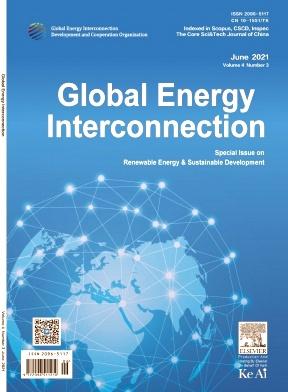Assessing the technical and economic potential of rooftop solar panels in Nador, Morocco, using advanced GIS methodology and remote sensing data
IF 2.6
Q4 ENERGY & FUELS
引用次数: 0
Abstract
The utilization of unused rooftops is a promising solution to meet the growing energy needs of urban areas. This study identifies the strategic locations for installing photovoltaic (PV) systems and assesses the energy production in Nador, Morocco, comparing various PV modules based on sunlight, while also integrating an economic analysis. A key innovation of this study lies in the novel application of LiDAR (Light Detection and Ranging) point clouds combined with photogrammetric restitution, enabling the construction of a 3D model of buildings. A Boolean multicriteria analysis was implemented to determine the effective surface area of each roof, considering parameters, such as slope, orientation, shadow, and accessibility, while excluding unsuitable buildings. A substantial area of 336 ha suitable for solar systems was identified, representing 61% of the total area of existing structures, with an average annual irradiation of 1,413.71 kWh/m2. The CIS (copper/indium/selenium) PV module stands out as an attractive option, offering an energy capacity of 168.56 MWp and significant energy production of 311.35 GWh. Their moderate initial cost of 376.95 million USD makes them financially appealing with a feasible return on investment within 10 years. Environmentally, the CIS module contributes notably to reduced CO2 emissions, thereby mitigating its environmental impact. By implementing the CIS module, solar energy production is expected to significantly exceed the estimated demand of the urban population. The data were integrated into a Geographic Information System to target roofs suitable for solar panels, forming the basis of an accurate solar cadastre. This study actively contributes to shaping a sustainable energy landscape by promoting environment-friendly solutions, thereby playing a role in transitioning to a more sustainable energy future in Nador.
利用先进的地理信息系统方法和遥感数据,评估摩洛哥纳多尔屋顶太阳能板的技术和经济潜力
利用未使用的屋顶是一个很有前途的解决方案,可以满足城市地区日益增长的能源需求。本研究确定了安装光伏(PV)系统的战略位置,并评估了摩洛哥纳多尔的能源生产,比较了基于阳光的各种光伏模块,同时也整合了经济分析。本研究的一个关键创新在于将LiDAR(光探测和测距)点云与摄影测量恢复相结合的新应用,使建筑三维模型的构建成为可能。采用布尔多标准分析来确定每个屋顶的有效表面积,同时考虑坡度、朝向、阴影和可达性等参数,同时排除不合适的建筑物。确定了适合太阳能系统的大量面积336公顷,占现有结构总面积的61%,年平均辐照量为1,413.71千瓦时/平方米。CIS(铜/铟/硒)光伏组件作为一种有吸引力的选择脱颖而出,提供168.56 MWp的能量容量和311.35 GWh的显著发电量。它们的初始成本为3.7695亿美元,适中,在10年内投资回报可行,具有经济吸引力。在环境方面,CIS模块有助于减少二氧化碳排放,从而减轻其对环境的影响。通过实施CIS模块,预计太阳能产量将大大超过城市人口的估计需求。这些数据被整合到地理信息系统中,以确定适合安装太阳能电池板的屋顶,形成准确的太阳地籍基础。这项研究通过推广环境友好型解决方案,积极促进塑造可持续能源景观,从而在向更可持续的能源未来过渡中发挥作用。
本文章由计算机程序翻译,如有差异,请以英文原文为准。
求助全文
约1分钟内获得全文
求助全文
来源期刊

Global Energy Interconnection
Engineering-Automotive Engineering
CiteScore
5.70
自引率
0.00%
发文量
985
审稿时长
15 weeks
 求助内容:
求助内容: 应助结果提醒方式:
应助结果提醒方式:


